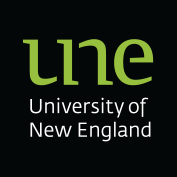Full description
The dataset I used for my thesis were mainly newspaper non-commercial advertisements. These advertisements were the only Iraqi production post-2003 war. At the same time, these non-commercial advertisements were very new to Iraqi culture. The campaigns proved to be effective and sometimes emotional to people. The YouTube videos are TV advertisements for the same campaigns. The main aim behind using these advertisements is to investigate the changes occurred to the Iraqi society post 2003, because of the drastic social and political changes that were implicitly and explicitly reflected in these non-commercial advertisements. The process of data collection did not involve field collection, because it was not safe at that time; therefore, all data were collected from Iraqi Commission of Integrity website: nazaha.org and from YouTube channels.Notes
Related PublicationsThesis title; The Iraqi Commission of Integrity website http://nahaza.org; YouTube https://www.youtube.com/
Issued: 2018-01-11
Date Submitted : 2018-01-11
Data time period:
2005 to 2013
Subjects
Communication |
Cultural Studies |
Cultural Understanding |
Culture and Society |
Communication |
Communication Across Languages and Culture |
Communication Across Languages and Culture |
Cultural Studies Not Elsewhere Classified |
Cultural Studies |
Cultural Studies Not Elsewhere Classified |
Culture, Gender, Sexuality |
Discourse and Pragmatics |
Expanding Knowledge |
Expanding Knowledge |
Expanding Knowledge |
Expanding Knowledge in Languages, Communication and Culture |
Expanding Knowledge |
Expanding Knowledge in Indigenous Studies |
Gender Relations |
Gender Studies |
Human Society |
Language, Communication and Culture |
Language, Communication and Culture |
Linguistics |
Language in Culture and Society (Sociolinguistics) |
Linguistics |
Sociolinguistics |
Visual Communication |
User Contributed Tags
Login to tag this record with meaningful keywords to make it easier to discover
Identifiers
- Handle : 1959.11/215339

- Local : une:1959.11/215339


